Iron Ore
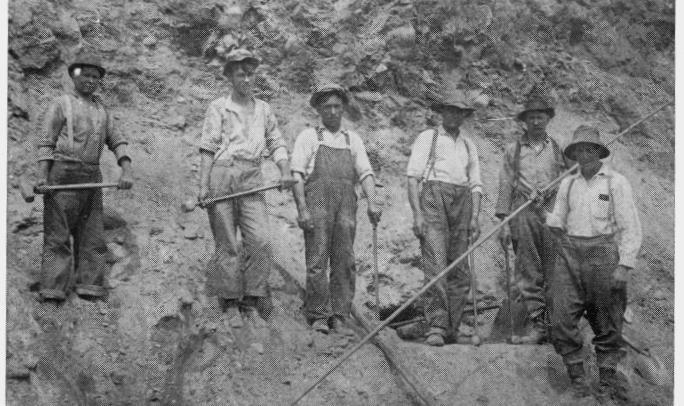
| Come gather ’round friends In the north end of town The iron ore poured Well a long winter’s wait Oh the years passed again With the lunch bucket filled every season Then the shaft was soon shut They complained in the East So the mining gates locked I lived by the window The summer is gone Organized Labor and the Iron Ore Miners http://collections.mnhs.org/MNHistoryMagazine/articles/41/v41i02p082-094.pdf
|
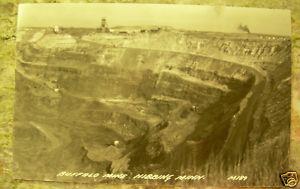

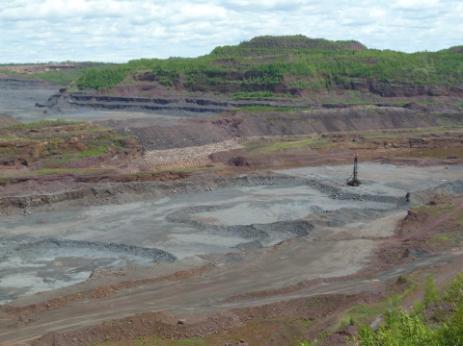
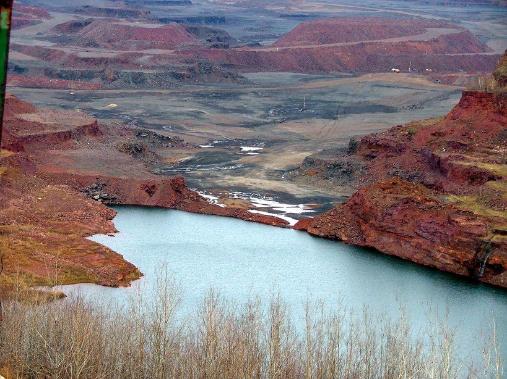
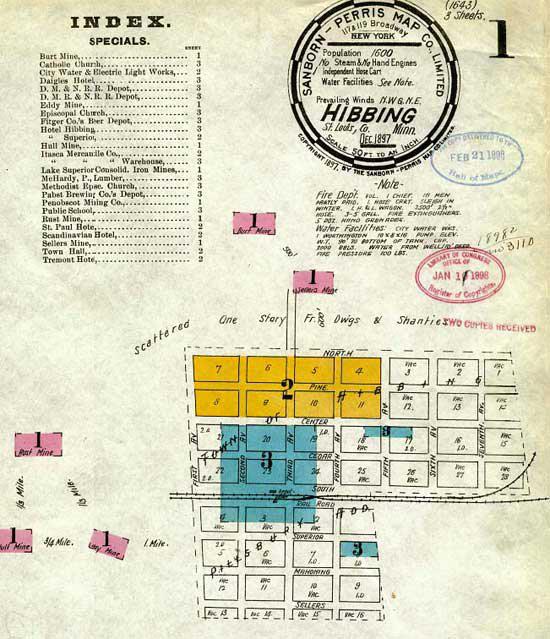 | Buffalo MineHibbing Minnesota
The Hull Rust Mahoning MineThe Hull Rust Mahoning Mine in Hibbing (1953) over a century after iron ore was first discovered there. An impressive geological formation. During Bob Zimmerman’s childhood the mines in Hibbing produced 25% of the United States' iron ore. Within the history of late 19th-early 20th century European emigration was driven by the voracity of the mines’ need for labour. People poured in from Finland, Ukraine, Italy, their different skills put to work in the mines themselves and in the town. Assimilation was fairly rapid, rough, and compulsory. Difference was accommodated, tolerance was a necessity, yet the flexibility of the diverse community was also bounded and isolated, rather than continually challenged and renewed. My mother's from the Iron Range Country up north
The Hull Rust Mahoning MineFirst ore shipments from the big pit were made in 1895. It became a spectacular man-made Grand Canyon of nearly 1,600 acres. At its maximum, the area covered is over three miles long, a mile wide and 535 feet deep. The pit is located where the original town of Hibbing once stood. Frank Hibbing obtained the first lease to mine ore in the area in December 1891. Beginning as an underground mine of small proportions, the land eventually became one vast open pit as other mines began to develop and emerge. Since ore shipments began from the Hull Rust in 1895, over 519 million tons of waste material and nearly 690 million tons of iron ore have been removed from the pit. Someone has figured that all the material removed - approximately 1.2 billion gross tons - is equivalent to digging a small tunnel from Minnesota through the core of the earth and out the other side. http://collections.mnhs.org/MNHistoryMagazine/articles/40/v40i07p340-347.pdf
Hull Rust Mahoning Mine looking to the northwest from the east end of the mine.
Hibbing map of the original townNow a very large hole in the ground.
|

North Hibbing
Before the whole town was moved south to allow open pit mining under the old town.
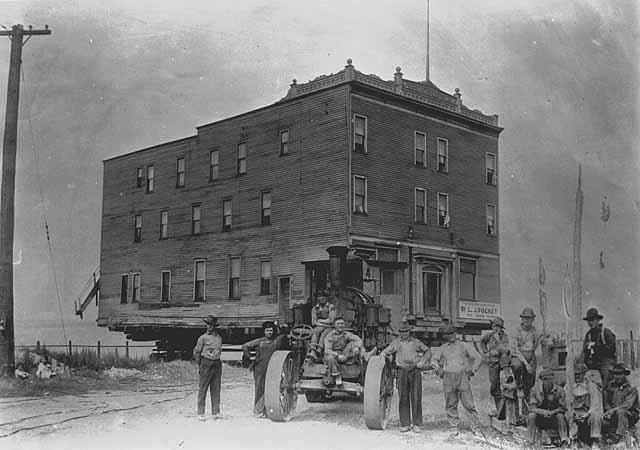
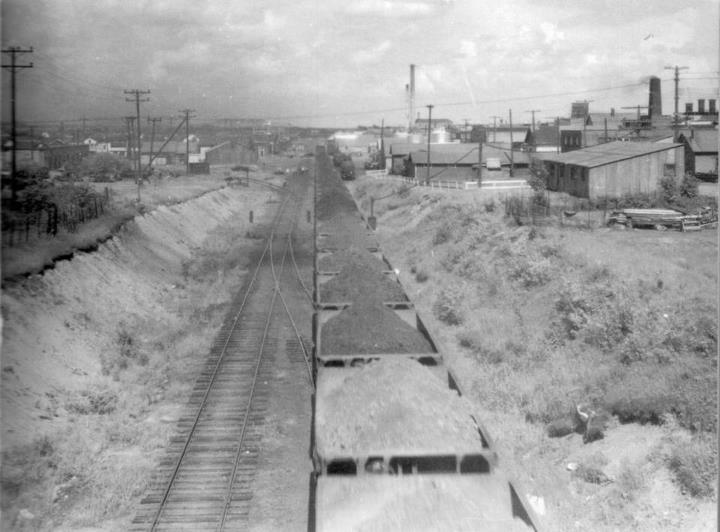
| Negotiations between the Oliver Mining Company and the town finally brought about a plan whereby the entire place would relocate to a site two miles south near Alice. The company, for its part, agreed to develop the downtown buildings with low interest loans that could be paid off over the years by the retailers. New civic structures such as Hibbing High School, the Androy Hotel, the Village Hall and the Rood Hospital were also constructed with mining company money. In all, about 200 structures were moved down the First Avenue Highway, as it was called, to the new city. These included a store and even a couple of large hotels. Only one structure didn't make it. The Sellers Hotel tumbled off the rollers and crashed to the ground leaving, as one witness said, "an enormous pile of kindling". The move started in 1919, and the first phase was completed in 1921. Known today as "North Hibbing", this area remained as a business and residential center through the 1940s when the mining companies bought the remaining structures. The last house was moved in 1968.
Ore train heading east through Hibbing."... till I heard the sound -- Bob Dylan, 1963
|
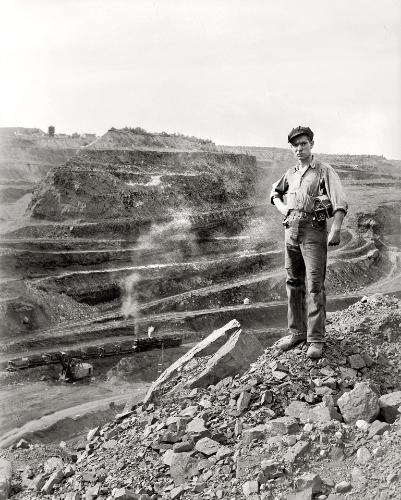
| Hull Rust Mahoning open pit iron mine, HibbingJohn Palumbo at the Hull Rust Mahoning open pit iron mine, Hibbing
|
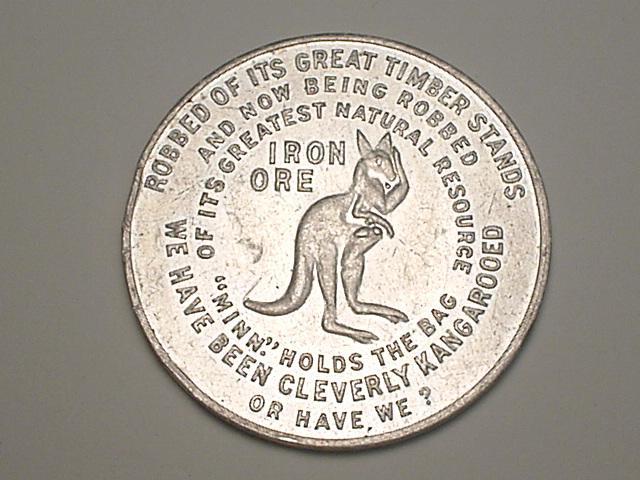
| Iron ore is rock from which metallic iron can be economically extracted. The ores are usually rich in iron oxides. The iron itself is usually found in the form of magnetite (Fe3O4), hematite (Fe2O3), goethite (FeO(OH)), limonite (FeO(OH).n(H2O)) or siderite (FeCO3). Ores carrying very high quantities of hematite or magnetite (greater than ~60% iron) are known as "natural ore" or "direct shipping ore", meaning they can be fed directly into iron-making blast furnaces. Iron ore is the raw material used to make pig iron, which is one of the main raw materials to make steel. 98% of the mined iron ore is used to make steel. It has been argued that iron ore is "more integral to the global economy than any other commodity, except perhaps oil".
|
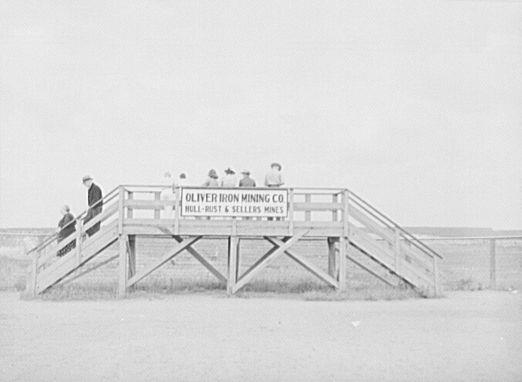 | Oliver Mining Company Hull Rust & Sellers Mines Viewing PlatformHull-Rust-Mahoning Open Pit Iron Mine. |